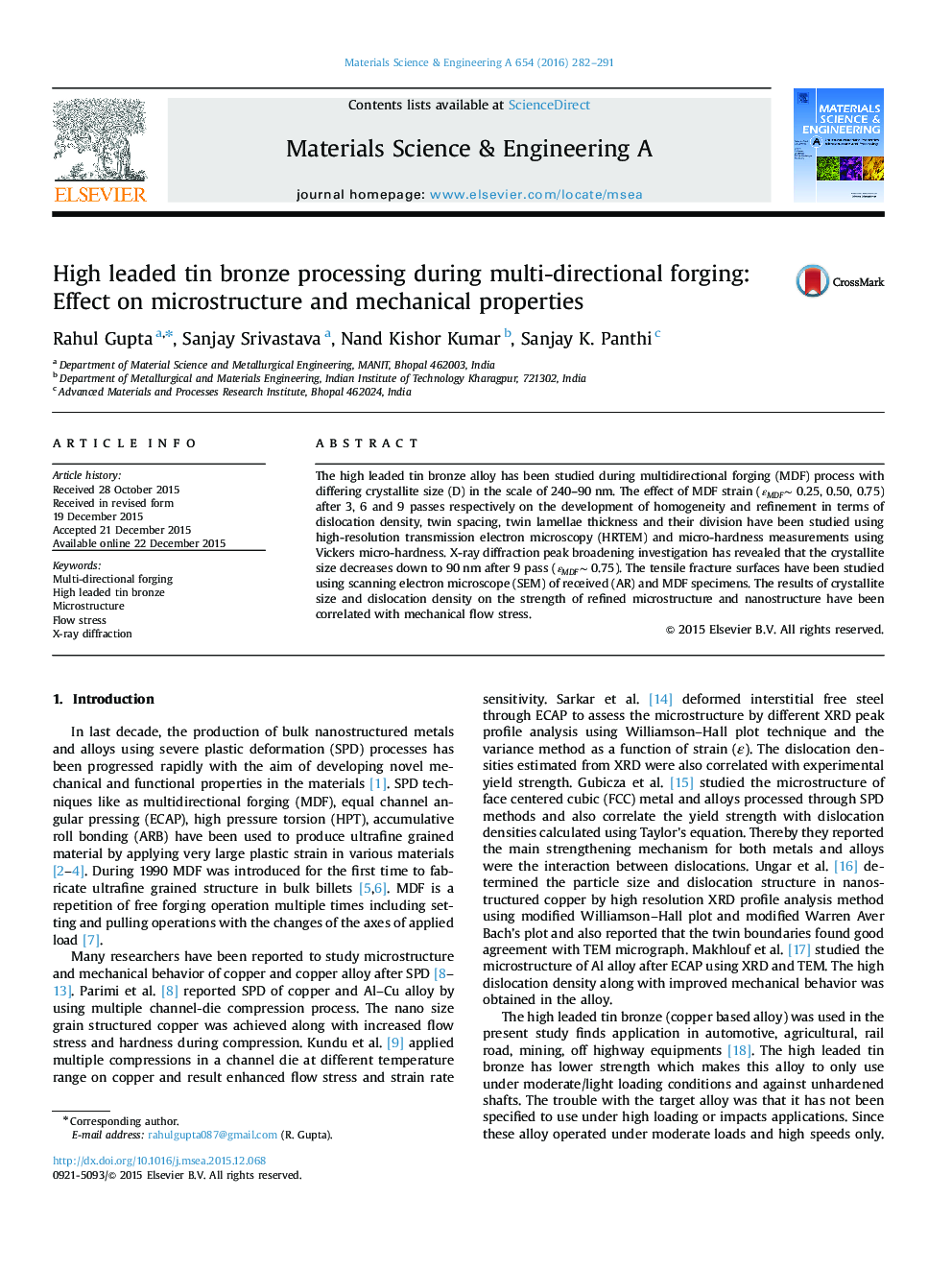| Article ID | Journal | Published Year | Pages | File Type |
|---|---|---|---|---|
| 7975658 | Materials Science and Engineering: A | 2016 | 10 Pages |
Abstract
The high leaded tin bronze alloy has been studied during multidirectional forging (MDF) process with differing crystallite size (D) in the scale of 240-90 nm. The effect of MDF strain (εMDF⼠0.25, 0.50, 0.75) after 3, 6 and 9 passes respectively on the development of homogeneity and refinement in terms of dislocation density, twin spacing, twin lamellae thickness and their division have been studied using high-resolution transmission electron microscopy (HRTEM) and micro-hardness measurements using Vickers micro-hardness. X-ray diffraction peak broadening investigation has revealed that the crystallite size decreases down to 90 nm after 9 pass (εMDF⼠0.75). The tensile fracture surfaces have been studied using scanning electron microscope (SEM) of received (AR) and MDF specimens. The results of crystallite size and dislocation density on the strength of refined microstructure and nanostructure have been correlated with mechanical flow stress.
Related Topics
Physical Sciences and Engineering
Materials Science
Materials Science (General)
Authors
Rahul Gupta, Sanjay Srivastava, Nand Kishor Kumar, Sanjay K. Panthi,
